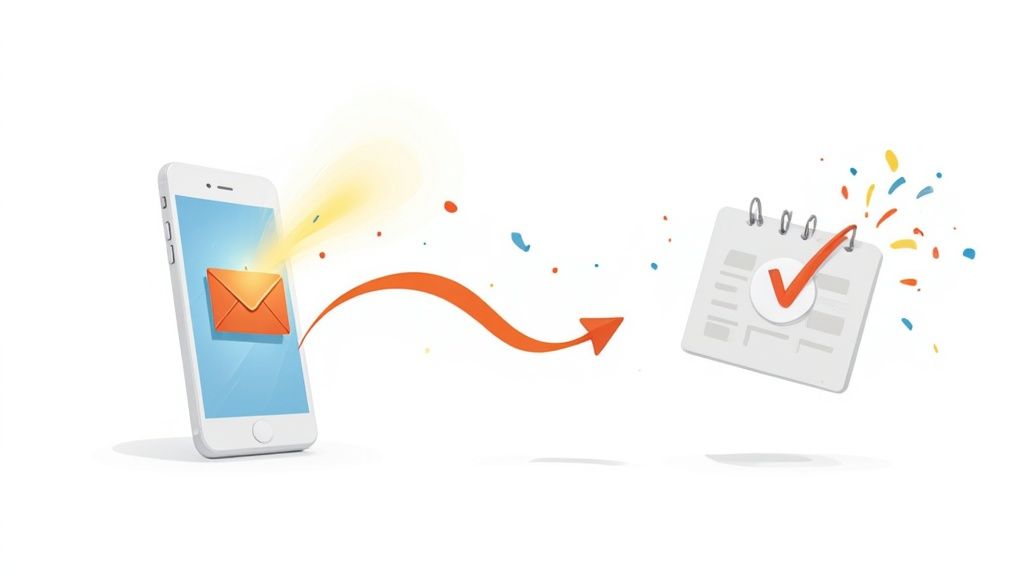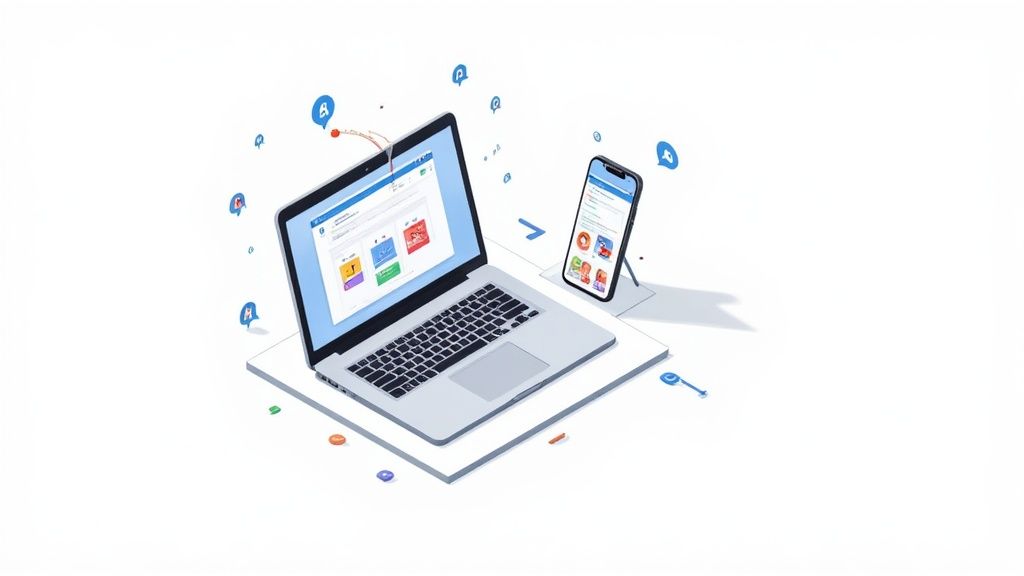Sending an invitation really boils down to two things: getting the message right and making sure it lands on someone's calendar. Today, that means using tools that don't just deliver your event details instantly, but also make it dead simple for guests to save them with a single click.
That last part is key. An invitation that's easy to add to a calendar is an event that won't be forgotten.
Moving Beyond Paper Invitations
Not too long ago, sending an invitation involved paper, envelopes, and a trip to the post office. There's a certain charm to that, sure, but modern event organizers need speed, efficiency, and a clear picture of who's coming. Sending an invitation today is less about postage stamps and more about creating a smooth digital experience.
This shift isn't just about convenience - it's a massive strategic move. The global market for electronic invitation software was valued at around USD 5.8 billion in 2023 and is on track to hit USD 15.3 billion by 2033. That kind of growth tells you everything you need to know about how we communicate now.
The Benefits of Digital-First Invites
Switching to a modern process immediately solves a bunch of old-school headaches. Forget wondering if your invite even arrived or manually tracking RSVPs in a spreadsheet. With a digital-first approach, you get immediate advantages that make life easier for everyone.
- Instant Delivery and Tracking: Your invitation hits their inbox in seconds, not days. Even better, you can often see who’s opened it and clicked the link.
- Effortless RSVP Management: Guests can reply with a click, and their answers are automatically logged for you. Now you have a real-time headcount without lifting a finger.
- Significant Cost Savings: You completely cut out the costs of printing, paper, and postage, which can get surprisingly expensive, especially for bigger events.
The most powerful part of a modern invitation isn't the message itself - it's the direct link to your guest's calendar. When they can add your event instantly, the chance of a no-show drops dramatically.
This is exactly why we built our service. We saw a gap for a tool that makes the whole process feel professional and just work. By focusing on that one critical action - getting your event onto someone's schedule - we help make sure all your hard work pays off with a great turnout.
You can check out our guide on creating an effective add to calendar link generator to see just how simple it can be.
Creating Your First Digital Invitation
Jumping into a new tool can feel like a bit of a slog, but we’ve made sure getting your first event out the door is incredibly straightforward. You should be able to go from a simple idea to a shareable, polished invitation link in just a few minutes. No friction, no fuss.
It all starts with the basics - the core details every single guest needs to know. Think of it as answering the five Ws: Who, What, Where, When, and Why. Get these right, and you're already most of the way there.
Entering Your Core Event Details
Once you're in the dashboard, your first stop is filling out the main event fields. This is the crucial information that helps your guests decide whether to commit.
- Event Title: Make it punchy and descriptive. "Q3 Marketing Webinar" is okay, but something like "Q3 Marketing Webinar: Mastering Local SEO" tells a much better story.
- Date and Time: Be precise here. We can't stress this enough, especially for virtual events with attendees from all over. Double-check your time zones! The good news is our service handles all the timezone conversions for your guests automatically, which is a massive headache solved.
- Location: If it's a physical event, pop in the full address. For an online event, this is the perfect spot for your video conference link.
Here’s a quick peek at the event creation screen so you can see exactly where these details live.
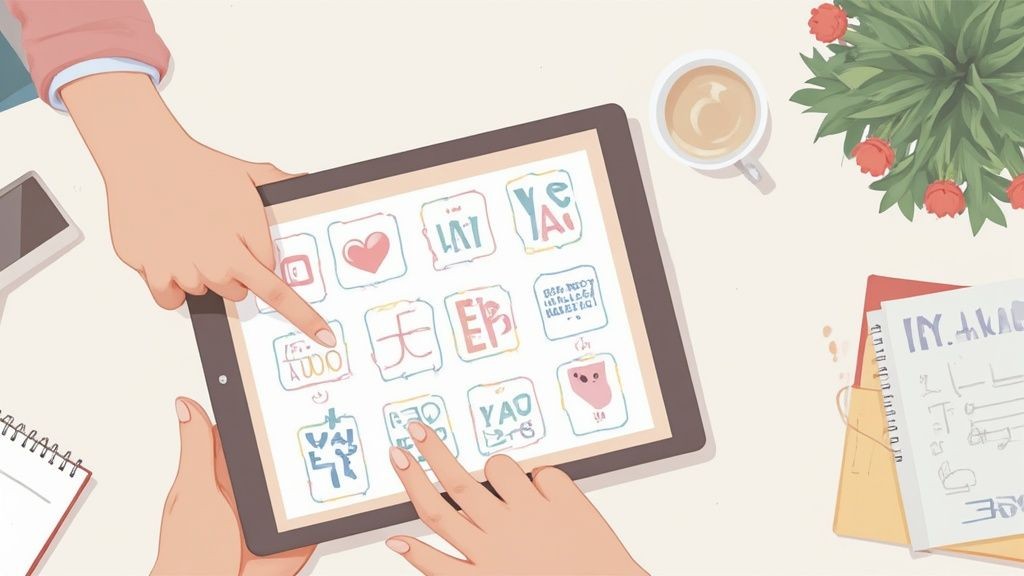
As you can see, the layout is clean and simple. We designed it this way on purpose to make sure you don't miss anything important before you generate your invitation.
From our experience, the best digital invitations lay out all the essential info right up front. One study even found that clear, concise event details can boost RSVP rates simply by making it easier for people to make a quick decision.
Once you’ve filled in these fields, you’ve done the heavy lifting. You now have a functional event that's ready to be shared. Next up, we’ll dive into how you can inject some personality and branding to make your invitation truly pop.
Designing Invitations That Get Noticed
A generic invite is an ignored invite. Simple as that. Once you've nailed down the essentials like date and time, your next job is to turn a basic calendar entry into a compelling touchpoint that actually builds excitement for your event.
This is your chance to get creative and give guests a real taste of what’s in store. Using our service, you can easily craft rich event descriptions that answer questions before they’re even asked. Think about including a quick agenda, a short speaker bio, or even a note on the dress code. These little details go a long way in making your guests feel prepared and valued.
Adding Your Brand’s Personal Touch
Beyond the words, your visual brand is what ties everything together. A simple but incredibly powerful step is to upload your company logo. It instantly makes the invitation feel more professional and official, reinforcing trust and recognition the moment your guest opens it. A clear call-to-action is just as important - tell your guests exactly what to do next, whether it's "Register Here" or "Visit Our Website."
This kind of customization is a huge deal. It’s what’s driving massive growth in the event software market. To give you some perspective, the wedding invitations software segment alone was valued at roughly USD 1.2 billion in 2024 and is on track to hit USD 3.5 billion by 2033. This isn't just about weddings; it shows a much broader demand for thoughtful, personalized digital experiences for all kinds of events. You can explore more about these market trends and see the impact for yourself.
The goal here isn't just to inform, but to engage. Every single element, from your logo to the last line of the description, should make people genuinely look forward to showing up.
Now, let's talk about timing your send, which is just as critical as the design itself. This chart breaks down the ideal lead times for different kinds of invitations, helping you plan your delivery for maximum impact.
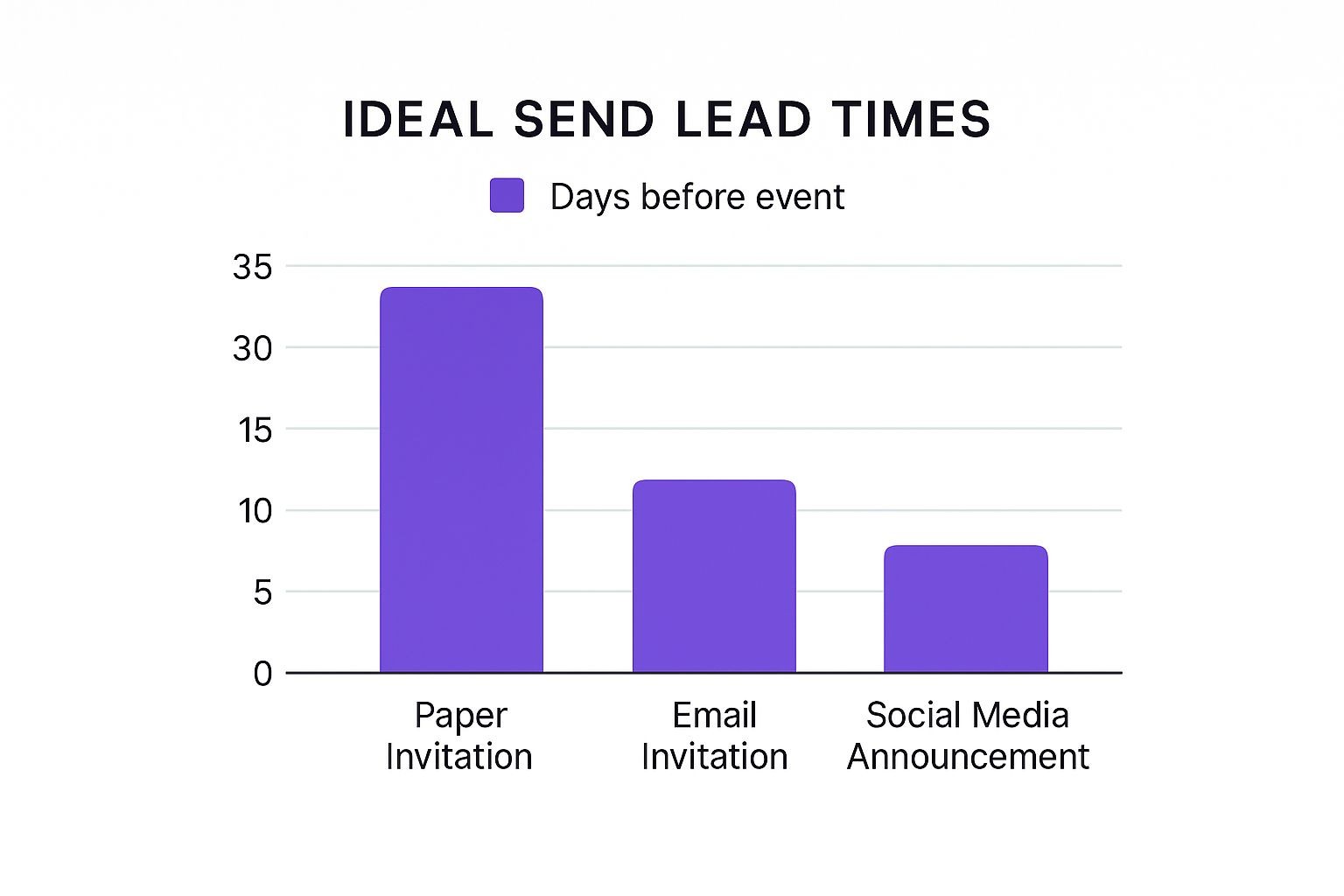
As you can see, digital methods like email give you much shorter timelines and a lot more flexibility in your planning. No more waiting on printers and snail mail.
To really make your invitations stand out, you need to think beyond the basics. While essential information is non-negotiable, it's the advanced touches that capture attention and drive RSVPs.
Essential vs. Advanced Invitation Customization
| Feature | Essential (Good) | Advanced (Better) |
|---|---|---|
| Branding | Your company name is listed as the organizer. | Your logo is prominently displayed, reinforcing brand identity. |
| Event Details | Includes the date, time, and a basic title. | Provides a rich description with an agenda, speaker bios, and relevant links. |
| Location | A simple address is included in the location field. | Provides a clickable map link and clear directions for both virtual and in-person attendees. |
| Call-to-Action | No specific next step is mentioned. | A clear, direct link to a registration page, event website, or contact info is provided. |
| Visuals | Text-only invitation. | Includes a relevant cover image or banner that sets the tone for the event. |
Ultimately, the "better" column is where real engagement happens. These advanced features don't just tell people what is happening; they show them why they should be excited to be there. It's the difference between an appointment and an experience.
Distributing Your Invitation Effectively
You've put in the work to create the perfect invitation. Now for the moment of truth: getting it into the hands of your guests.
How you send that invite matters just as much as what's on it. The real goal is to pick a channel that not only gets your invitation seen but makes it ridiculously easy for people to say "yes" and get it on their calendar with a single click.
Think like a marketer for a second. The channel you pick should feel right for the event's vibe and match your relationship with the guests. A formal webinar announcement needs a different touch than a casual community get-together. Nailing this part will do wonders for your response rate.
Matching Your Channel to Your Event
One of the best things about a digital invitation link - like the one you get from our service - is just how flexible it is. You can drop it almost anywhere, but smart distribution is all about picking the right tool for the job.
- Email Campaigns: This is still the gold standard for business events, webinars, or any situation that calls for a professional approach. Embedding your link in an email lets you add context, tell a story, and keep a direct line of communication open. For event marketing, email remains a powerhouse for engagement.
- Social Media: Got a public event or something for the community? Sharing the link on platforms like Facebook, LinkedIn, or Twitter is a brilliant way to build some buzz. It’s a more casual space that naturally encourages people to share it with their own networks.
- QR Codes: Don't sleep on print! For in-person networking events, trade shows, or local meetups, a QR code on a flyer or poster that links straight to your invitation from our service is a genius move. It’s the perfect way to bridge the physical and digital divide.
The most effective strategy is often a multi-channel one. Try using email for the main announcement and then social media for reminders and hype-building. You'll capture a much wider audience and keep your event top-of-mind.
For a big corporate product launch, a targeted email campaign is probably your best bet to reach key stakeholders. But for a local book club meeting? A Facebook event page with the invitation link is perfect for getting the word out in the community. You can learn more about the mechanics of this from our guide on how to share a Google Calendar event, as the core principles are very similar.
Every channel has its own strengths. Choosing the right one ensures your invitation doesn't just get delivered - it actually lands with impact.
Getting a Handle on Your Guest List and RSVPs
Let's be honest, managing a guest list can feel like herding cats. But getting it right is the difference between a packed house and a room full of empty chairs. A little organization goes a long way.
The key is timing. You want to hit that sweet spot where your invitation lands in their inbox when they're ready to plan, but not so early that they forget about it completely.
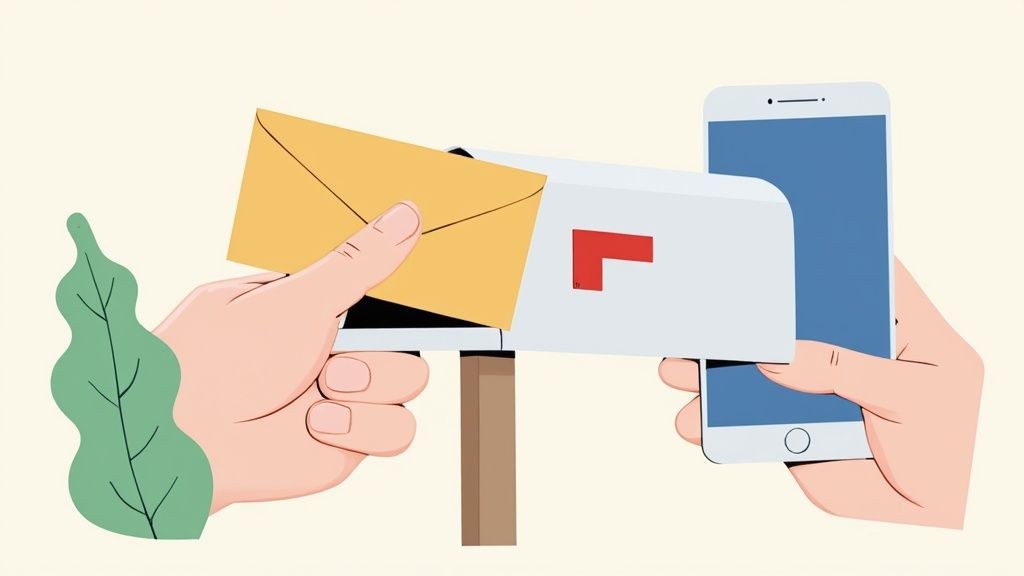
Think about who you're inviting. Don't just blast the same generic message to everyone. A personalized note that explains why this event is perfect for them will always get a better response. Segment your list by interest, relationship, or how they know you.
Here’s a simple timeline we’ve seen work wonders for casual meetups:
- Send the first invite about 7 days out.
- Drop a friendly calendar reminder 3 days before the event.
- Give one final nudge 1 day before to lock in those commitments and slash no-shows.
Tracking RSVPs Without Losing Your Mind
Once the invites are out, you need to know who’s coming. Our built-in RSVP dashboard gives you a live look at who has added your event to their calendar. You can see who’s in, who’s out, and follow up with anyone on the fence with just a click.
The single biggest reason for no-shows? People simply forget. By making it dead simple for guests to add your event to their calendar, you’re basically setting up an automatic reminder for them. Based on our own data, this one small step can cut no-shows by as much as 30%.
A quick reminder does more than just jog someone's memory. It reminds them why they were excited to say "yes" in the first place.
This isn't a new concept. Digital invites have been changing the game for years. Back in 2008, Evite.com saw a 60% jump in wedding invitations sent through its platform, from 750,000 to 1.2 million in a single year. That shows you just how powerful this shift is.
With real-time response data, you can make smarter decisions.
- Personally reach out to anyone who marked themselves as a "maybe."
- Get a final, firm headcount two days before the event.
- If anything changes - like the time or location - you can push out an update instantly.
Putting Your RSVP Data to Work
Don't let that data go to waste. Dig into your RSVP metrics to spot trends. Are more people declining than you expected? Maybe the timing was off. This information is gold for planning your next event. You’ll know exactly how many people to plan for and can adjust your logistics on the fly.
For a deeper dive, check out our guide on creating an RSVP link. It’s packed with tips for getting seamless insights.
A few more pro tips:
- Export your RSVP lists to slice and dice the data however you want.
- Tag your guests by their interests or even dietary needs for future events.
- Treat every calendar add as an automatic reminder for your guest.
When you combine smart timing, compelling copy, and real-time tracking, you're not just sending an invitation - you're creating an experience that people actually want to be a part of.
Got Questions About Sending Invitations? We've Got Answers
Even with the best tools in your corner, a few questions are bound to pop up when you're in the thick of event planning. Here are some of the most common ones we hear from folks looking to send invitations that actually get results.
Can I See Who Added My Event to Their Calendar?
Yes, you absolutely can. Our analytics dashboard gives you a crystal-clear view of how many people have clicked your link and added the event. Honestly, this is often a much better signal of real interest than a traditional RSVP list.
It helps you move beyond guesswork and start forecasting attendance with some real data behind it.
What Is the Best Way to Send an Event Reminder?
The most powerful reminder is the one your guest doesn't even have to think about. When you use an "add to calendar" link, the event on their calendar becomes the reminder. All the notifications are handled automatically by their own device's settings.
The real value here is in the automation. Once your event is on their calendar, you've already secured a spot in their schedule. That's far more effective than a last-minute email that could easily get buried in a busy inbox.
Of course, if you want an extra touch, sending a brief follow-up email a day or two before the event is a great way to rebuild excitement and share any last-minute details.
How Should I Handle Event Changes?
This is a huge - and often stressful - part of managing any event. When you're using a dynamic tool like our service, it's simple to update the event details in your dashboard. Any changes you make are instantly live on the invitation link itself.
But here's the critical part: for guests who have already added the event to their calendar, you must send them a direct notification. An email is usually the best way to do this.
Be sure to explain the change and, most importantly, include the updated "add to calendar" link in that message. This makes it incredibly easy for them to replace the old entry with the new one, keeping everyone in sync and avoiding a whole lot of confusion on the day of your event.
Ready to send invitations that your guests will actually appreciate? Our service makes it a breeze to create, share, and track your events from one simple platform. Try it for free today!
